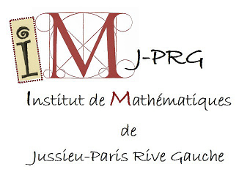| Résume | {\em Cardinal invariants of the continuum} are cardinal numbers describing the combinatorial structure of the real numbers (the Cantor space $2^\omega$ or the Baire space $\omega^\omega$) and typically taking values between the first uncountable cardinal $\aleph_1$ and the cardinality of the continuum $\mathfrak c$. An example is the unbounding number $\mathfrak b$, the smallest size of a family of functions in $\omega^\omega$unbounded in the eventual dominating ordering. Such cardinal invariants have many applications in areas like general topology, group theory, real analysis, etc.
While cardinal invariants of the continuum have been investigated intensively for decades, more recently people have started to look at the higher Cantor space $2^\kappa$ and the higher Baire space $\kappa^\kappa$, where $\kappa$ is an uncountable regular cardinal, and redefined analogous cardinals, called {\em higher cardinal invariants},in this context. Many results known for $\omega$ carry over to $\kappa$, in particular in the case when $\kappa$ is a large cardinal. However, there are also several interesting differences between the classical case and higher cardinalinvariants.
I will give a survey on cardinal invariants, starting with the classical case, and then moving to higher invariants. |

